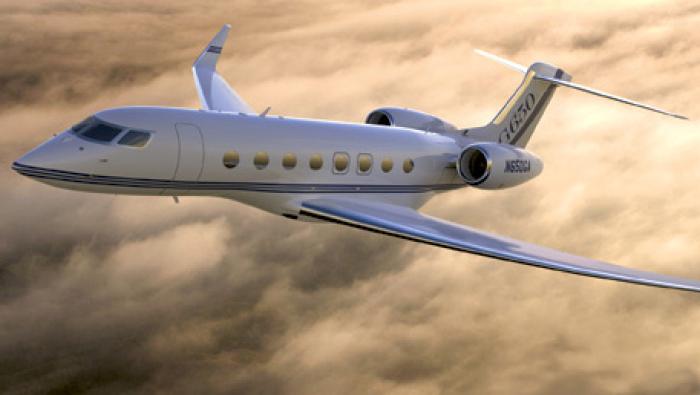Airbus is producing a “final fix” to strengthen parts of the A380’s wing structure that have developed cracks on early examples of the very-large airliner. Aircraft now in production will be modified and the changes will be retrofitted to in-service aircraft. The cracks occurred on wing-rib feet that fasten skin panels to internal wing ribs.
An inspection and repair program, approved by the European Aviation Safety Agency (EASA), permits continued safe operation of almost 80 aircraft that have been delivered to customers, according to programs executive vice president Tom Williams. The Airbus executive has acknowledged his embarrassment about the problem because the A380 wing was developed in Britain early in the last decade during his tenure as the UK program manager, so “my fingerprints are all over the A380 wing,” he said.
Speaking as he was the outgoing Airbus chief executive shortly before becoming chief executive of parent company EADS in June, Tom Enders conceded that the situation was not good for the manufacturer. Airbus thought it understood the properties of the A380 wing materials and the interface between carbonfiber and metal, but “found out the wrong way we didn’t know everything,” said Enders. “It has cost the company a great deal of money and [harmed our] reputation.”
In its 2012 first-quarter results, EADS said the final retrofit fix is more complex than initially anticipated in March. “Therefore, the group updated the cost for the retrofit solution, leading to an additional charge of €158 million [about $200 million] in the first quarter,” he said. Altogether, Airbus has registered charges of €264 million (about $330 million) to cover modification of the 30 A380s it plans to deliver this year.
All A380s delivered from early 2014 will be to this standard. Before then Airbus plans new 575- and 490-metric-ton (about 1.268 million pounds and 1.08 million pounds, respectively) maximum takeoff weights offering operators some 500 nm more range or eight tons (about 17,640 pounds) extra payload.
The changes mean an A380 could fly 525 passengers from London to Perth, Australia, said Airbus. Operating at 510 tons (almost 1.125 million pounds) mtow with 670 passengers, a “regional” A380 could fly from Hong Kong to Jeddah, Saudi Arabia, or beyond Australia, according to Williams.
Improved engines will be available from both suppliers, including new optional thrust settings for operations from short, hot or high runways. Also coming are structural design and system improvements to reduce weight and increase reliability.
Modified Wings
From the end of 2012, the A380 will feature modified wings that incorporate a revised design for certain ribs following Airbus’s analysis of cracks discovered earlier this year in feet (or brackets) that attach the ribs to the outer skins, known as “covers,” in Airbus parlance. The manufacturer will revert to the use of metal in place of the composites material chosen originally to save weight in the wing-rib panels (or webs) and is planning to provide parts for in-service aircraft modification from early next year. The change brings A380 wing-ribs into line with other Airbus models that have metal wing ribs.
In the future, all wing-rib feet will be manufactured from 7010 Aluminum, rather than 7449 material, making them “similar to other Airbus aircraft,” according to Williams. “All aircraft delivered from early 2014 [will be] to this standard. There will be no weight increase and thus no impact on aircraft performance.”
Airbus is planning to provide parts for retrofit to the current A380 fleet, and aircraft already in production, during the first quarter of 2013. After modification, they may be flown without the need for “extraordinary inspections or interventions” at least until they achieve their design service objective (or “life”) of 19,000 flight cycles.
Wing sets for as many as 50 aircraft in various stages of construction had been delivered to the final-assembly line in Toulouse from Airbus UK by the beginning of last month. Each A380 wing has up to 60 ribs, with about 4,000 rib feet per wing set, although only about 20 brackets have been subject to cracking.
The work to overcome the problem involves changing the relevant composite wing-rib panels and associated rib feet, said Williams. An “intensive testing and analysis” exercise is under way. “The method and timing of the modification is being discussed with airlines to align with their operational needs,” he said.
Airbus investigation revealed two material problems, identified as Type 1 “micro” cracks in the wing-rib feet and, more significantly, Type 2 examples that must be inspected when aircraft have reached 1,300 flight cycles. “The cracks result from material choice, thermal distortion at extreme low temperature and stresses generated during assembly. [The] final fix for all aircraft is being designed–for delivered aircraft and new production [examples]. It will restore the full life capability of the wing without performance impact,” according to Williams.
He said that Airbus had not used carbonfiber composites for wing-rib construction on previous models and that the A380’s designers were “pushing hard” to reduce weight. By using the composite material for wing-rib webs and conventional aluminum-alloy for rib feet, the manufacturer had been able to save about 660 pounds from the weight of each wing.







